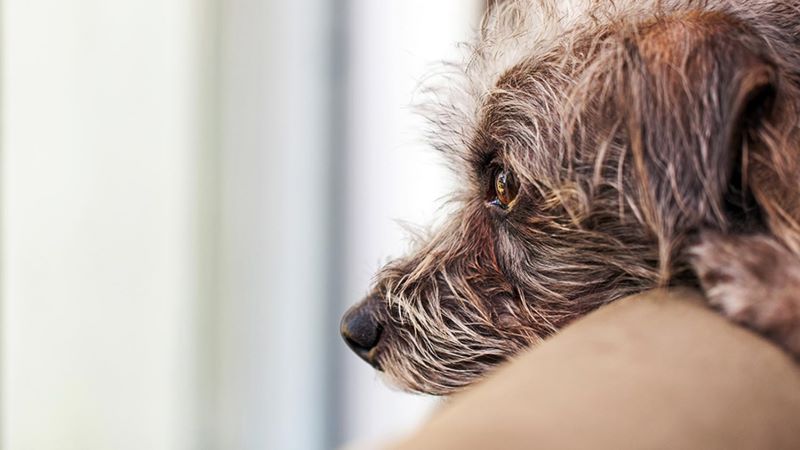When we had date night, I used to try to get in as many kisses as possible, and promise my youngest we would be right back. This resulted in tears, anxiety, and running out the door after our car as we were pulling out of the driveway. My husband put a quick stop to my long drawn out goodbyes by insisting I kiss my son long before we were actually going to leave, and then slip out the door with a quick smile and a wave when it was time to go.
Didn’t I tell you Pets and Toddlers Speak the Same Language? What works with my toddler is actually what is recommended by dog trainers as well. Read on to find out if your dog is suffering from separation anxiety and to learn some tips for easing this anxiety.
Signs of separation anxiety in pets
First, let’s identify the warning signs of separation anxiety in pets. In her blog post, How to Calm Down an Anxious Dog, Ashley Atkinson, CPDT-KA says dogs use body language to convey how they are feeling. Here are some ways they may show their dislike of being left alone:
- Chewing furniture and/or shoes or clothes
- Howling/whining/barking
- Pacing
- Going to the bathroom in the house
- Scratching at the windows/doors
Easing pet separation anxiety
- Exercise your dog before leaving him alone. Take your dog for a long walk or play a game of catch. Wearing your dog out before you leave him for any length of time can help him rest easy while you are gone.
- Set the tone. Susan Konecny, RN and DVM of Best Friends Animal Society says, “Check your own state of mind: reacting to your dog’s anxiety with nervousness of your own can cause your dog to pick up on your anxiety and heighten the problem further.” Giving my toddler excessive kisses and assuring him I would “be right back,” was actually creating anxiety for him. The same is true for your pooch.
- Don’t touch or make eye contact. In her blog post, Ignore Behaviors and Watch Them Disappear, Lisa Radosta says, “Many behaviors can simply be corrected by ignoring them.” If your dog engages in what Radosta calls attention seeking behaviors such as jumping, barking, and pawing when you leave or return home, try ignoring the behavior. Let your dog know that leaving him is not a big deal. When your dog greets you calmly, reward him.
- Say goodbye well before leaving. If you feel you must say goodbye to your dog, try saying your parting words and giving love to your dog well before you leave. When it is time to leave, don’t make a production about it (I learned this lesson the hard way with my toddler!).
- Start out small. Begin by leaving your dog for small amounts of time and then working up to longer periods. In her blog post Anxiety: The Root of Most Evil, Dr. Jennifer Coates, DVM suggests “gradually increasing the intensity of the anxiety-provoking stimulus so long as they remain calm.”
Following our tips can give you the peace of mind you need to trust that your furry best friend will hold down the fort (and not rip it to shreds) while you are away from home. Consider enrolling your pet in a pet insurance policy to help with unexpected veterinary bills that may arise should your pet get injured when acting out with separation anxiety.

